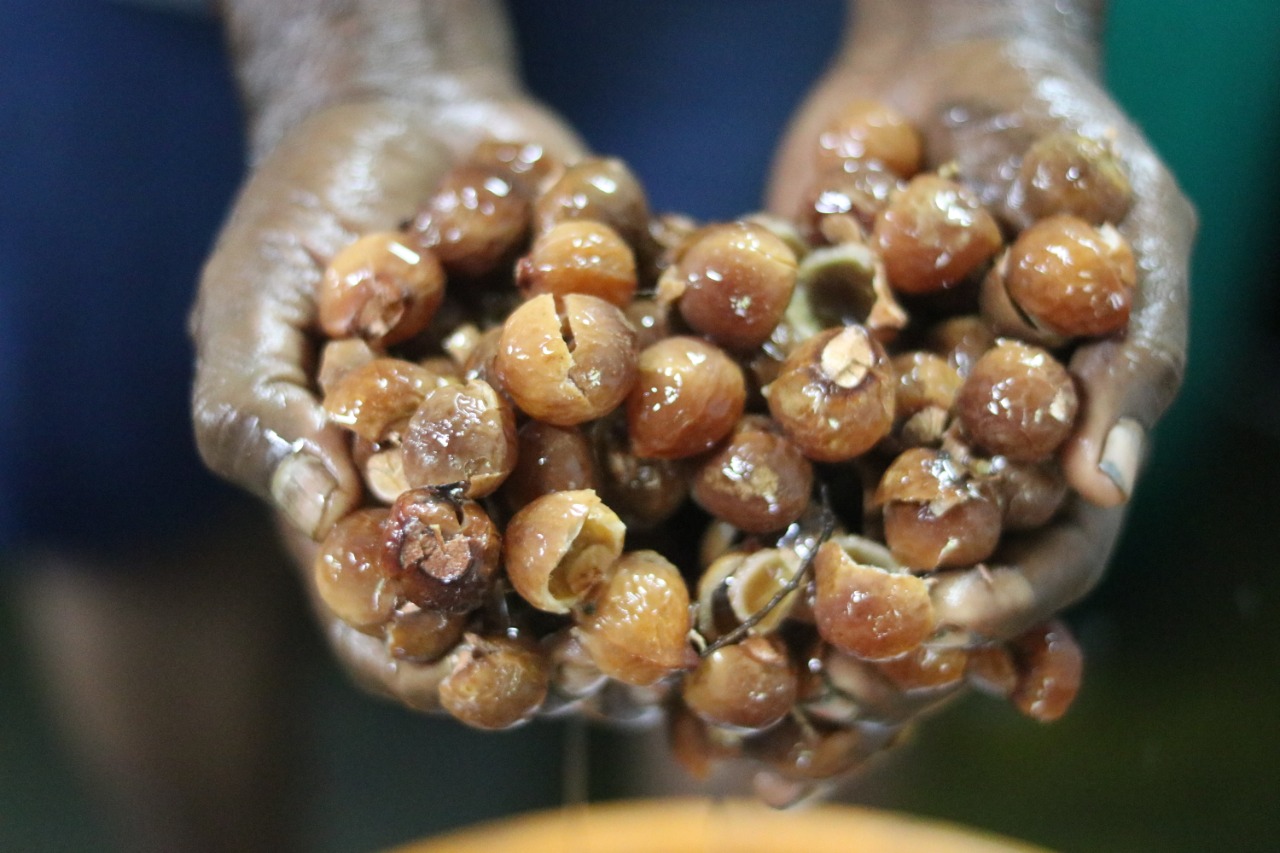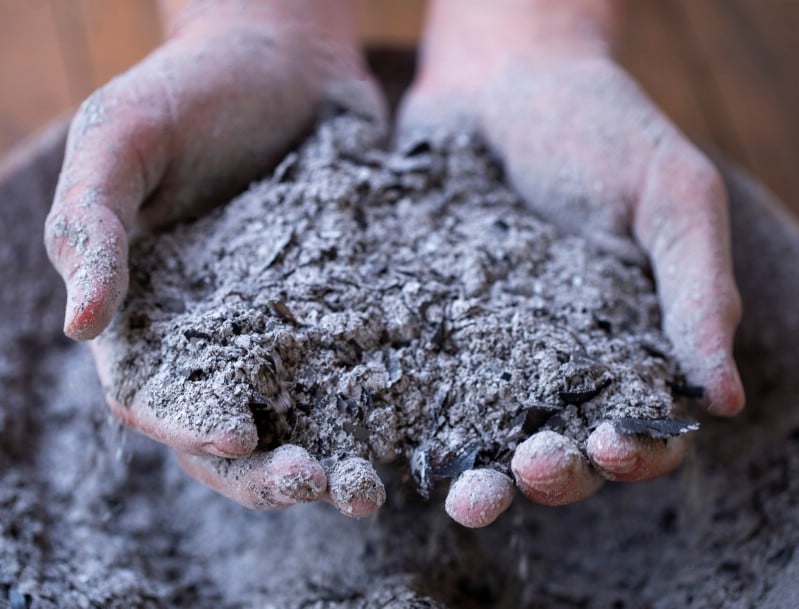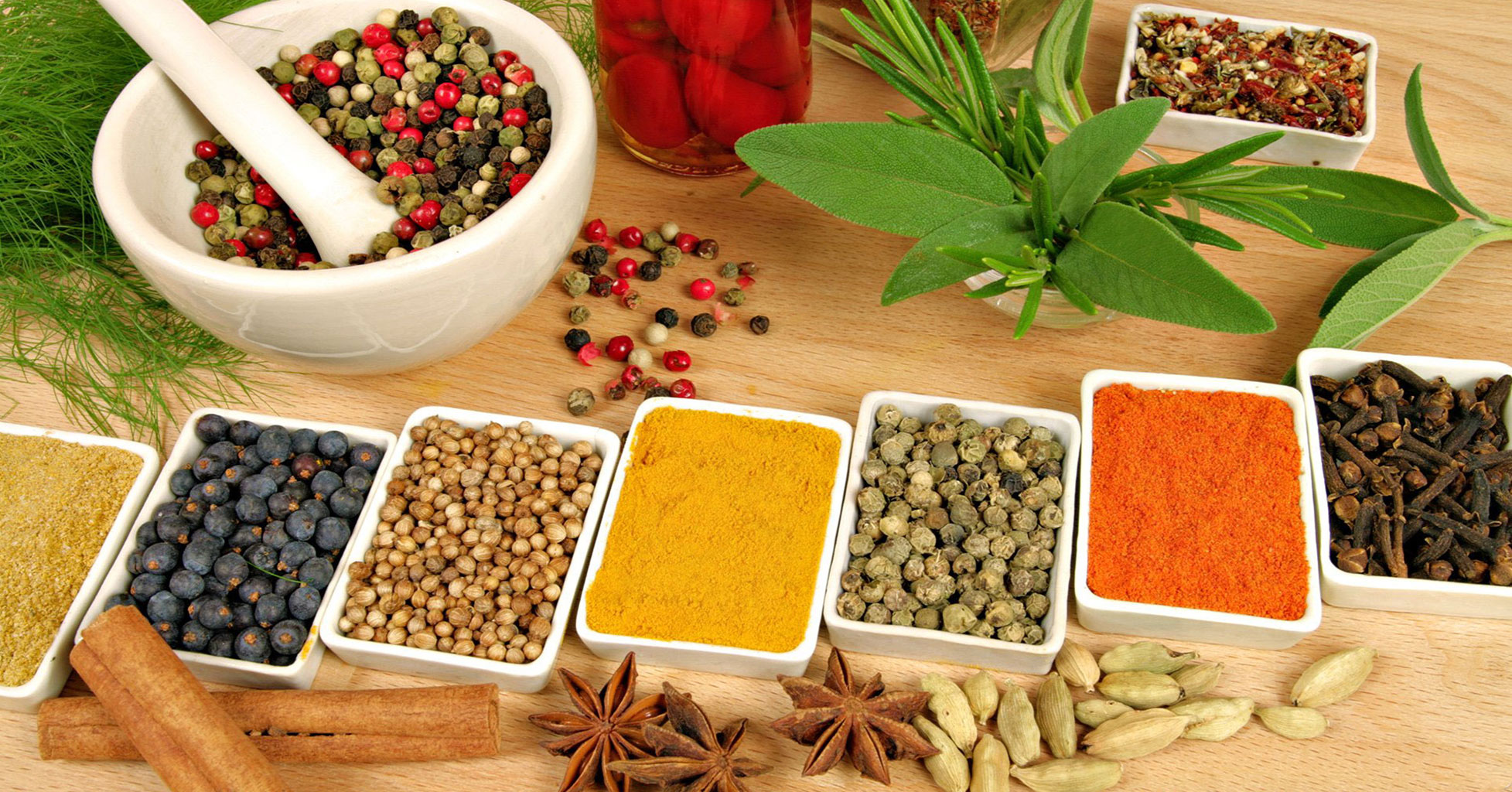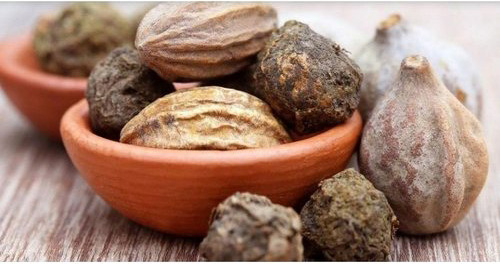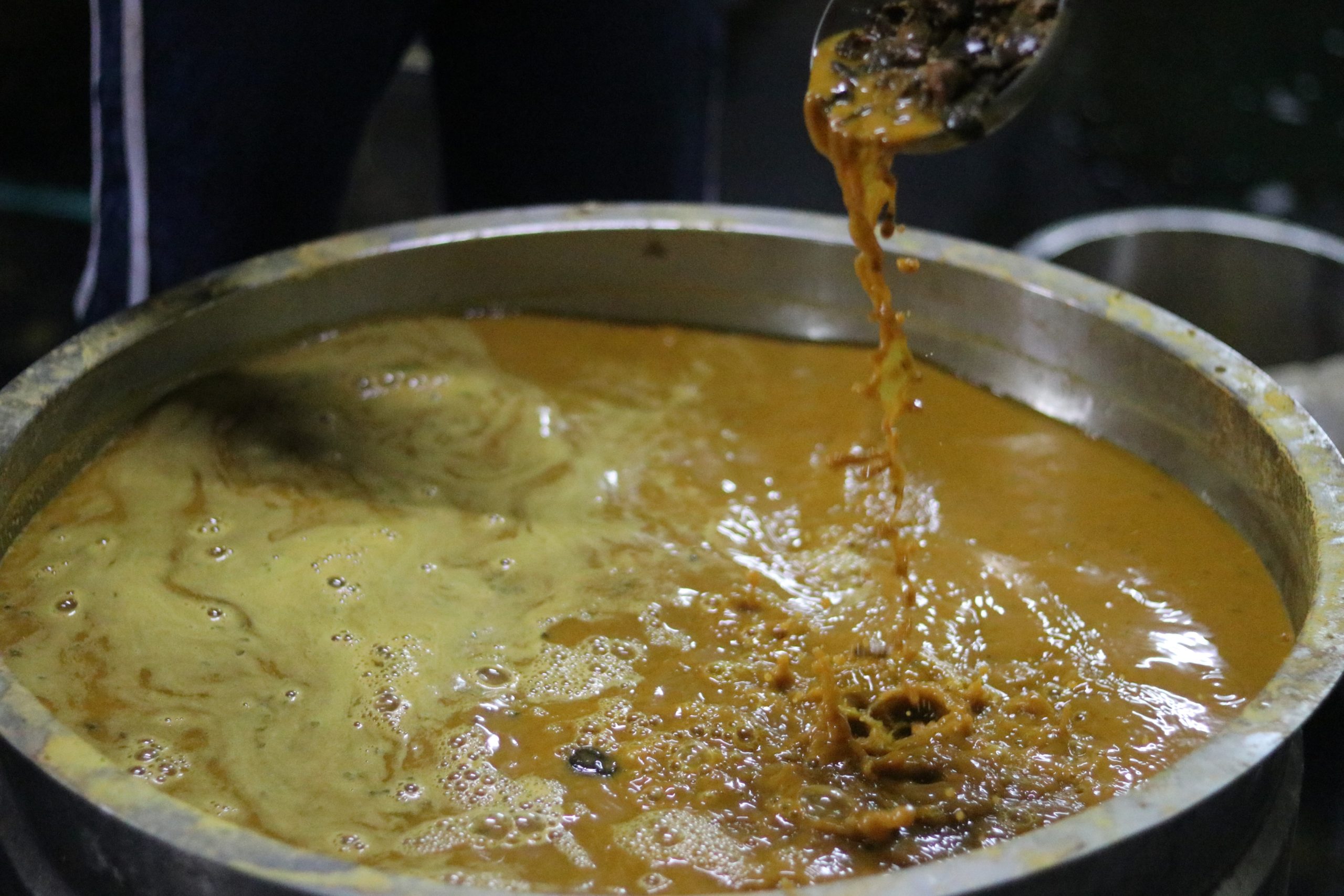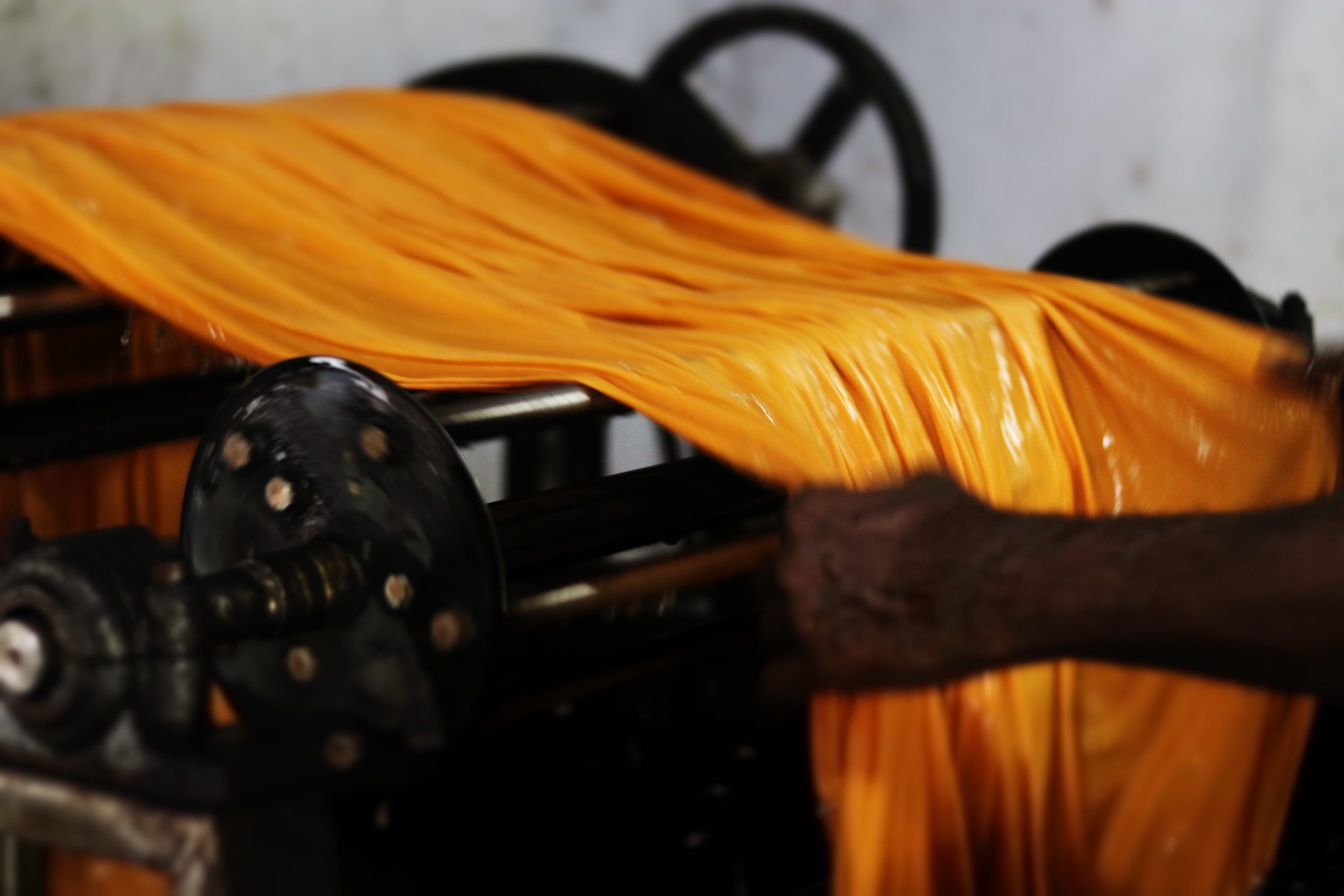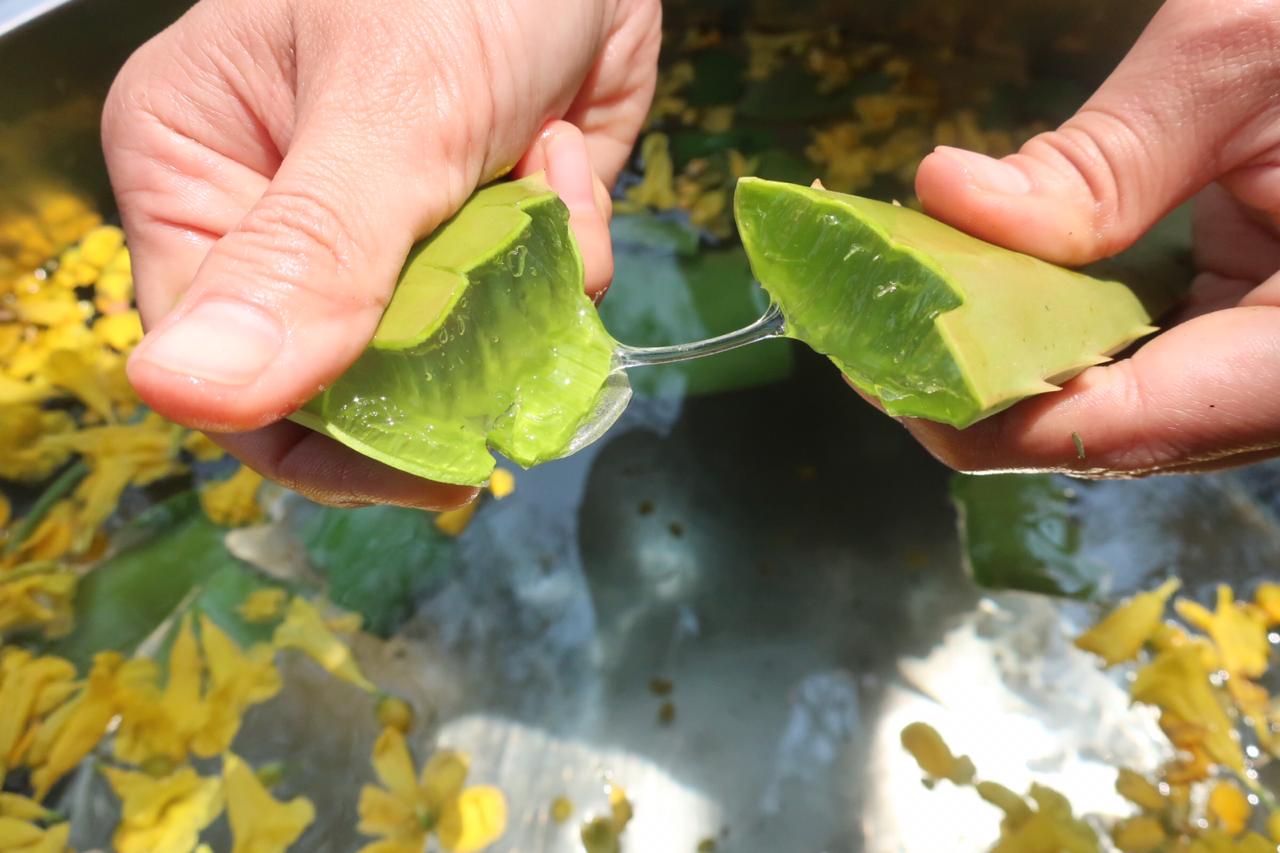
Ayurvastra - Process of Ayurvdedic Textiles
Ayurvastra process is a unique process developed after a lot of research on ancient textiles. After many years of research, the ancient dyeing is discovered by our team of scholars and formulas are made in different proporations. Finally, standardized into twelve shades and four finishings (general wellness, anti-microbial, aromatic, and sleep enhancing).
The modern textile industry is developing towards synthetic process creating health hazards. Ayurvastra uses natural methods to safegurad the health. There is a concept called micro-encapsulation where the active components of herbs are encapsulated and fixed into the textiles for many finishings. The same has been done by our ancestors naturally and bond with the textile.
Pre-processing (RFD)
The pre-processing is a method where the contamination of the fibres or the fabrics were removed. In cotton, there is a component pectin (yellowish color) and the spinning and weaving use wax and stratch. To remove these unwanted elements we do a pre-processing process.
Dyeing
Ayurvedic dyeing is the complex dyeing process where many entities are involved. Shade herbs (which gives shades) and Mordanting Herbs (myrobalam, jathi leaves) and Ayurvedic Herbs (for Infusing Ayurvedic properties).
Ayurvastra - Shades
Shade * | Some of Predominant Herbs | Benefits |
|---|---|---|
Yellow | Turmeric / Avarampoo / Pomegranate | It contains a yellow-colored chemical called curcumin, which is often used to color foods and cosmetics. |
Green | Tulasi / Karisalankanni / Onion | Tulsi leaves are used to treat skin problems like acne, blackheads and premature ageing. |
Blue | Indigo Leaves / Wood | Indigo possesses restorative and smoothing properties for skin. |
Orange | Annatto / Marigold | Annatto is sometimes put directly onto the skin to treat burns and other wounds, to repel insects, and for vaginal or eye infections. |
Red | Kumkum / Maddar / Pathimugam | The healing water that turns light pink in color is used as a cure for skin diseases, blood purification and diabetes. |
Kakki | Kadukaai / Nellikaai / Thaanthondrikaai | Its anti-inflammatory and antioxidant properties may help heal certain skin issues. |
Pink | Sevaralikodi / Pathimugam | Topical application of Manjistha combats dry skin, rashes, itchiness and inflammation. It lightens scars and marks and flushes toxins out of the body. |
Black | Karungali / Puliyankaai | It effectively scavenges free radicals from the skin and diminishes oxidative damage. |
Natural White | Limestone / Fullerseth / Sunlight | It eliminates dead cells acting as a natural exfoliant. Gives a better appearance to the skin tone, promoting a more radiant and luminous effect. |
Brown | Vettiver / Velam | Vetiver essential oil is hailed for its use in skin cell regeneration and boosting the growth of new cells. |
Grey | Vembaadam / BlackCummin | The bark is used for skin diseases as it has anti-allergic properties. |
Ivory | Neem / Pomegranate | The antioxidants in neem are beneficial for reducing melanin production of your skin. It also reduces the dark spots, blemishes and any kind of redness on your skin |
* - Shades will vary depending upon herbs (Ratio/Season/Climate/Region etc.)

